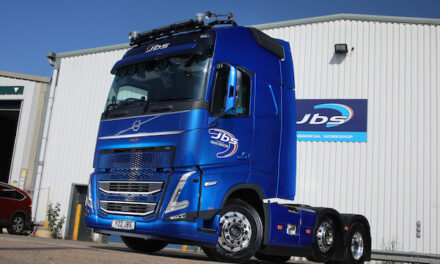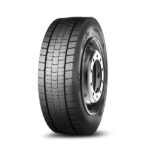Image source: https://unsplash.com/photos/6tAIO3pxde4
A material handling fleet is an invaluable resource, especially if your company deals with heavy or awkwardly shaped materials that would be difficult to manipulate by hand. A fleet that’s beginning to break down can throw a wrench into your daily functions. What are the clear signs that it is time to update material handling equipment?
1. Equipment Age
The first indicator that it could be time to replace your material handling equipment is its age. Even if you take excellent care of your fleet, the hands of time will eventually catch up. The older your equipment, the more likely you’ll begin running into problems.
The average usage life for a piece of material handling equipment is about 10,000 engine hours. The number might not sound like much until you realize that converting it to miles increases the number 25 to 35 times. A piece of material handling equipment at 10,000 hours could be equal to anywhere from 250,000 to 350,000 miles.
Like a car with that sort of mileage, your equipment may still function — and replacing it may be an expense you’re not yet prepared for — but it isn’t going to hold a candle to a comparable new machine.
2. Obvious Damage
Obvious or apparent damage can also indicate that it’s time for a replacement. Broken safety rails, heavily worn forklift forks, dents in the equipment’s casing, or signs of rust or wear could indicate that the equipment has reached the end of its life span.
These signs need to be assessed on a case-by-case basis. Some problems may be easily fixed, as with the worn forklift components, but others may necessitate a total replacement. Don’t take chances with any damage that could put operators at risk. Anything that interferes with built-in safety features should be repaired or replaced as soon as possible.
3. Frequent Breakdowns
Even well-maintained equipment may break down or fail from time to time. If those breakdowns become more frequent, it may be necessary to fund a complete replacement. Eventually, your repairs and stop-gap measures will stop helping and you may find yourself stuck with a massive, expensive paperweight. In addition, downtime caused by failed equipment can cost a company thousands of dollars a day while you struggle to get things running again.
4. Increased Maintenance Costs
Even if your fleet isn’t breaking down, a sign that you might need to replace your equipment is steadily increasing maintenance costs. You’ll find yourself paying more to keep the machines running. Eventually, it will stop being worth the expense. In some situations, you may pay more for upkeep and repairs than the equipment is worth. At that point, choosing to update material handling equipment becomes more cost-effective.
5. Reduced Efficiency
Regardless of the power source, each piece of material handling equipment should be able to complete a certain number of hours of work per fuel refill or battery recharge. Like your car, that efficiency will slowly begin to decline over time. This productivity depreciation is part of the wear and tear of the equipment, but a steep decline could indicate more extensive problems.
If standard maintenance and repairs don’t fix the issues, a replacement will become the only option if you hope to keep costs down and maintain workplace productivity.
6. Accidents or Injuries
Accidents or injuries in the workplace may not always be the fault of your equipment. Operator error is to blame for over 90% of job site accidents. There are cases where equipment failure could contribute to an accident. Perhaps the brakes fail on a forklift, sending it careening into the wall or tipping over when the operator tries to correct the error. Equipment failures that put employees at risk are a sign replacement is in order.
7. Not Meeting Your Needs
Material handling equipment has evolved a lot over the past couple of decades. If you’re still utilizing the old fleet that’s been around for that entire time, you may find that as it slows down — and the industry speeds up — it will no longer meet your company’s needs.
It’s hard to keep up with increasing consumer and client demands if you can’t even get your forklift started on a cold morning. If you’re struggling to keep up, it might be time to update material handling equipment and let that old fleet rest.
When Should You Update Material Handling Equipment?
Old fleet equipment might be comfortable or familiar, but it won’t be as efficient or functional as newer options. If it’s more than 10 years old, it’s time to start thinking about replacing key pieces. It is expensive to update material handling equipment, so it’s not a task you need to tackle all at once.
Take a closer look at your fleet, and consider maintenance costs, efficiency ratings and operational statistics. You may find that some items aren’t pulling their weight anymore. That may be the perfect place to start updating your fleet and making the most of your material handling equipment moving forward.
By Emily Newton






